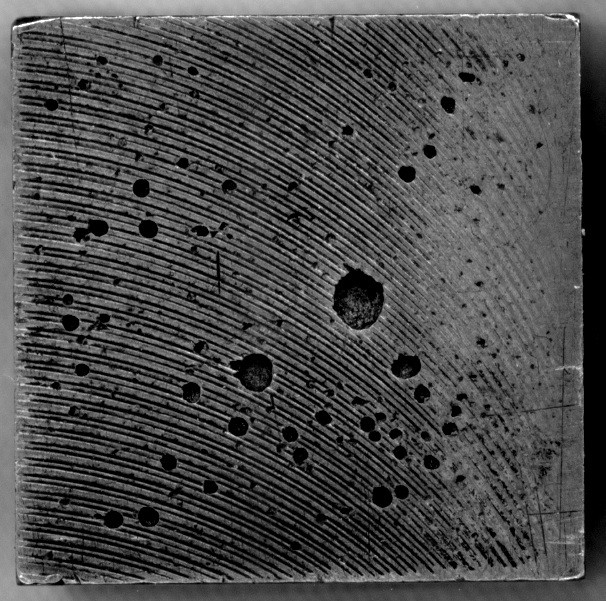Text:
With Gutenberg’s invention of the adjustable hand mould, no less was achieved than the industrial-scale production of a commodity - metal type - in any desired quantity and with consistent quality, effectively ushering in the modern era. Master scribes were replaced by master printers. This invention would last half a millennium vegor it, in turn, was pushed aside by photosetting, by information being transmitted at the speed of light. The end result, however, was still a printed letter on a page. Unfortunately a correspondingly fast improvement in human comprehension has not been forthcoming. The composition of our brains is basically unchanged since the time of Adam & Eve. An a is an a, and always will be.
At the threshold of this new era in printing technology, one name stood out: Adrian Frutiger. The measurer and standard-setter of all things typographic. In his 1951 diploma submission, Adrian Frutiger produced nine wooden panels on which he had engraved letter by letter, examples of Western alphabets - from Greek inscriptional capitals to humanistic minuscules and cursives. It was already apparent in this work that he was a master of space, proportion and order. it was clear even then that his career path would be characterised by his passion for the criteria of legibility and the beauty of form. During his time in France, typefaces such as Méridien, Serifa, Iridium and Linotype Centennial were produced, typefaces that captured the zeitgeist, and which are still proving their worth today.
Around the middle of the last century work began on the production of a typeface family with the name Univers. A system ordered and classified into 21 members was a totally new approach at the time. These 21 members would find their application in every area of use: from gracing posters to appearing on the smallest packaging leaflet. The first step in the generation of every printed product developed by a highly specialised profession is the choice of a typeface and its design. As much for movable type as for photosetting and the compositor, this typeface is still the lynchpin at the end of those 500 years. it represents both the end of an era and the beginning of a new one. If survival down the ages is an important criterion for art, then this is also true for the art that neither displays nor has need of modish showiness.
With Adrian Frutiger there has always been a seamless transition between applied and fine art. The glyphs of his Indian typeface an of his logotypes have also been applied in his sculptures, reliefs and woodcuts in a free and unique manner. They spring from the same sense of form and strength of expression as his applied art. Everything that takes and assumes shape in his works has been filtered through his depth of knowledge and his power of thought. However, Adrian Frutiger has always remained a great, yet modest man, a man who, in his dedication to his work in the service of type and the word, and in his ceaseless invention in the form and material of his fin art works has been, and will remain, a standard-setter.
